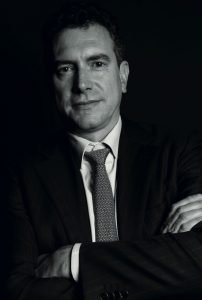There’s only one way to save leather: recycling.
True recycling, through which it is possible to transform a product into another equally useful, goes beyond a mere marketing campaign. Silvateam took the first step on this path by developing Ecotan, a recyclable, metal-free and glutaraldehyde-free leather made using natural tannins, biopolymers and sustainable finishing products safe for humans and the environment. Over 20 of the top tanneries around the world have joined the project and are ready to supply Ecotan leathers worldwide. Both finished articles and scraps from this leather processing are designed to be biocircular. Through a process of acid hydrolysis, end-of-life leathers return to nature as fertilizers for organic farming, closing the cycle of sustainability instead of ending up in landfills to be incinerated.
Silvateam’s willingness to look forward and foresee market requirements has allowed it to start a win-win collaboration with the Italian producer of fertilizers Fertilizzanti Certaldo Srl, opening up promising opportunities for a fashion industry which is increasingly on the lookout for sustainable and recyclable products.
Antonio Battaglia, director of Silvateam’s Leather Business Unit, explains why it is the right time for the leather industry to look towards the future.
Recyclable or biodegradable? Which is the solution? Our view is that biodegradable leather is not the solution, leather as a matter of fact is tanned in order to avoid its decay and become a durable product. Furthermore, leather cannot be used to make compost, first of all because it is prohibited by law and secondly because the chemicals used during tanning would make the compost unusable. For this reason, we decided to find alternative solutions to respond to the market’s demand for greater circularity in leather.
How did the involvement of Fertilizzanti Certaldo in this venture come about? The input came directly from the fashion industry, in particular from the footwear sector. Following a meeting with Luigi Petralli, CEO of Fertilizzanti Certaldo, we understood that Ecotan leather tanned according to certain requirements could be transformed into a fertilizer, a product even more noble than compost that can still allow us to close the circle. Born from meat industry waste, leather comes to life thanks to processes that enhance its value and, once exhausted, it returns to nature as a fertilizer. This is true circularity for us.
Biocircularity: what does it mean for you? Tanning has always been considered a model of the circular economy since it processes by-products of the food industry – hides – and transforms them into one of the most valuable, breathable and durable materials for the production of fashion and design accessories: leather. The biocircularity of Ecotan involves the recycling of leather items and processing waste at the end of their life. Ecotan hides can be transformed into a slow-release organic-mineral fertilizer for organic farming. In this way leather closes the loop sustainably, returning to nature as a useful nutrient which increases the yield of agricultural production. As a result, the livestock production, from which the raw material for tanning is initially derived, also benefits from this process. We also talk about “bio” because Ecotan leather is tanned with natural tannins, polyphenolic substances extracted using only hot water and nothing more. These molecules are obtained from chestnut and quebracho wood, tara pods and gallnuts and are harmless both to humans and the environment. In order to demonstrate the sustainability of our sourcing methods, we were the first in the industry to certify its production of chestnut and quebracho tannin through the Programme for Endorsement of Forest Certification (PEFC). Therefore, biocircularity for us means starting from nature and returning to nature.
Is the leather industry on the way to becoming fully circular? The path is still long, but Ecotan is a viable solution, as it allows nearly 90% of leather from various applications to be recycled. Footwear, leather goods and automotive will have to follow the path of circularity, mainly by focusing on the engineering of leather items; our next challenge will be the fully recyclable shoe, from the sole to all of its components. The delay in the leather industry regarding recyclability has generated difficulties that we are well aware of, among others, plastic based materials that are marketed as “eco” substitutes for leather, which are much less sustainable but, to the consumer, seem greener.
Is the fashion world ready to take the big step towards sustainability? We started developing these concepts ten years ago and we had almost no feedback. The fashion world’s attention towards this issue is now huge. There are companies that wish to invest and others more reluctant to do so, perhaps because they are more interested in the aesthetic and technical performance characteristics of the product. Innovation today is sustainability; we are only at the beginning of the journey; new ways must be found. Some brands we collaborate with, for example, are thinking of encouraging the consumer to return shoes back to the store once he or she has finished using them, at which point the brand in collaboration with other companies will take the product apart, separate the leather from the other materials and recycle each one individually.
www.silvateam.it
ecotanleather.com

Antonio Battaglia, director of Silvateam’s Leather Business Unit
